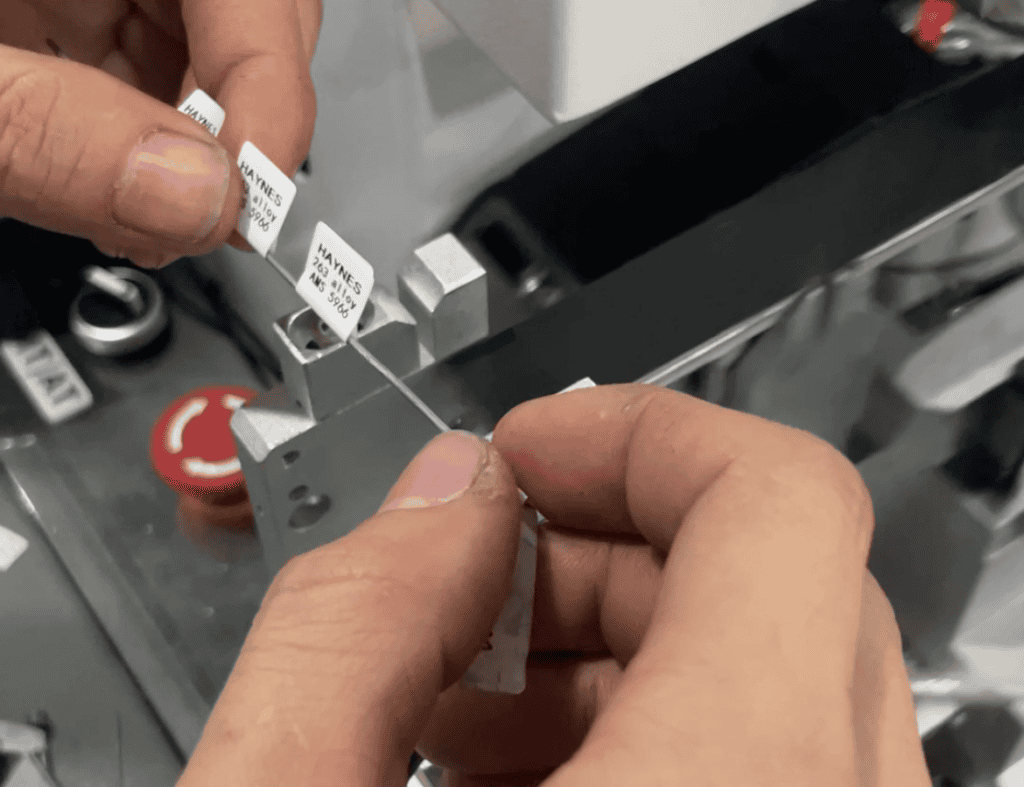In today’s fast-paced technological environment, where every second counts and clarity can mean the difference between success and failure, the management of cables can often be overlooked. Yet, it remains a foundational aspect of organizing and maintaining any system that relies on electronic connections. Proper cable labeling is not just a matter of convenience but a critical component of system management, ensuring efficiency, safety, and easy troubleshooting.
The best cable labeling combines durable materials with appropriate adhesive qualities to ensure labels remain legible and firmly attached under various environmental conditions. Customization options for different cable diameters and environments further enhance the effectiveness of cable labeling.
Read on to discover the art and science of cable labeling, which not only simplifies maintenance and upgrades but also minimizes downtime and errors.

What is Cable Labeling?
Cable labeling refers to the practice of marking and identifying cables within a system. This process involves attaching labels or tags that provide information about the cable’s purpose, destination, or other relevant details.
Cable labeling helps technicians and users identify and differentiate between multiple cables, especially in complex systems where numerous similar-looking wires are present. It serves as an essential step in cable management, preventing confusion and saving time during installation, maintenance, troubleshooting, and upgrades. Labels can vary in form, from simple handwritten tags to professionally printed labels designed to withstand environmental factors.
Purpose of Cable Labeling
The primary purpose of cable labeling is to ensure easy identification, which facilitates efficient system management and maintenance. It aids in preventing mistakes that can lead to system failures or downtime and supports quick resolutions to connectivity issues.
By clearly marking cables, technicians can easily trace lines through complex pathways, reducing the risk of disconnecting or interfering with the wrong connections. Cable labeling also enhances safety by identifying potentially hazardous connections and supports compliance with industry standards and regulations, which often require detailed documentation of network infrastructure.
Why Should I Label My Cables?
Labeling your cables is crucial for maintaining an organized and efficient working environment. It not only helps in quick identification but also significantly reduces the time and effort involved in troubleshooting and repairs.
The benefits of cable labeling extend beyond mere convenience; it is a risk management practice. In environments where system reliability and uptime are critical, such as in data centers or medical facilities, the ability to quickly resolve issues can be vital. Proper labeling can also facilitate future upgrades or expansions by providing a clear understanding of the existing setup.

What is the Best Cable Labeling?
The best cable labeling strategy combines durable materials with adhesive qualities suitable for the application environment. The choice of label material and adhesive must be tailored to the specific needs of the environment, such as exposure to high temperatures, moisture, or chemicals.
Quality standards for labels focus on the durability of the material and the adhesion strength of the glue. For instance, labels used in outdoor environments or industrial settings might require UV-resistant materials and adhesives that can bond securely to different surfaces. The label’s readability over time and under various conditions is also crucial, necessitating the selection of high-quality printing methods and materials.
How to Label the Cable?
Traditionally, cable labeling involves manually wrapping and folding labels around each cable. However, this method can be time-consuming and prone to inaccuracies. Modern approaches utilize wire labeling machines that automate the process, ensuring consistency and efficiency.
Automated labeling machines can accommodate different cable sizes and types, applying labels with precision and durability. They significantly speed up the labeling process, making it more efficient and reducing human error. The technology behind these machines allows for custom label creation, including the incorporation of barcodes, QR codes, and detailed text, further enhancing the utility of cable labeling.
Please click on this article ” How do you label instrument cables?” for more details.
General Requirements for Cable Labeling
From extensive experience with clients across various industries, it’s clear that labels must meet certain criteria, including waterproof, high-temperature resistance, and durability against handling. The adhesive quality is paramount, ensuring that labels remain securely attached over time.
The general requirements for cable labels stem from the need to withstand the environmental conditions they will be exposed to. This includes factors like moisture, heat, chemicals, and physical wear and tear. Labels must remain legible and intact to maintain their functionality, necessitating the selection of materials and adhesives that meet these demands.
Customizing Cable Labels
Customization of cable labels is a practical approach to meet the specific needs of different cable diameters and application environments. While standard sizes exist, the ability to tailor labels to the exact requirements enhances efficiency and applicability.
The customization process involves selecting the appropriate label size, material, adhesive, and printing specifications to suit the specific application. This might include custom graphics, color-coding, or pre-printed information. The aim is to create labels that not only serve their functional purpose but also contribute to the overall organization and management of the cable system.
Conclusion
Effective cable labeling is a critical aspect of system management, significantly impacting efficiency, safety, and reliability. By choosing the right materials, adhesives, and customization options, and leveraging automated labeling technologies, organizations can ensure their cable systems are well-organized, easy to navigate, and prepared for future expansions or modifications.
You may be interested:
- What is the instrument used for Labelling?
- Top 10 Things You Should Know About Industrial Wire Labeling Machines
- How Do You Label Instrument Cables?
- Can the Power Supply Voltage of the Wire Labeling Machine Be Changed?






